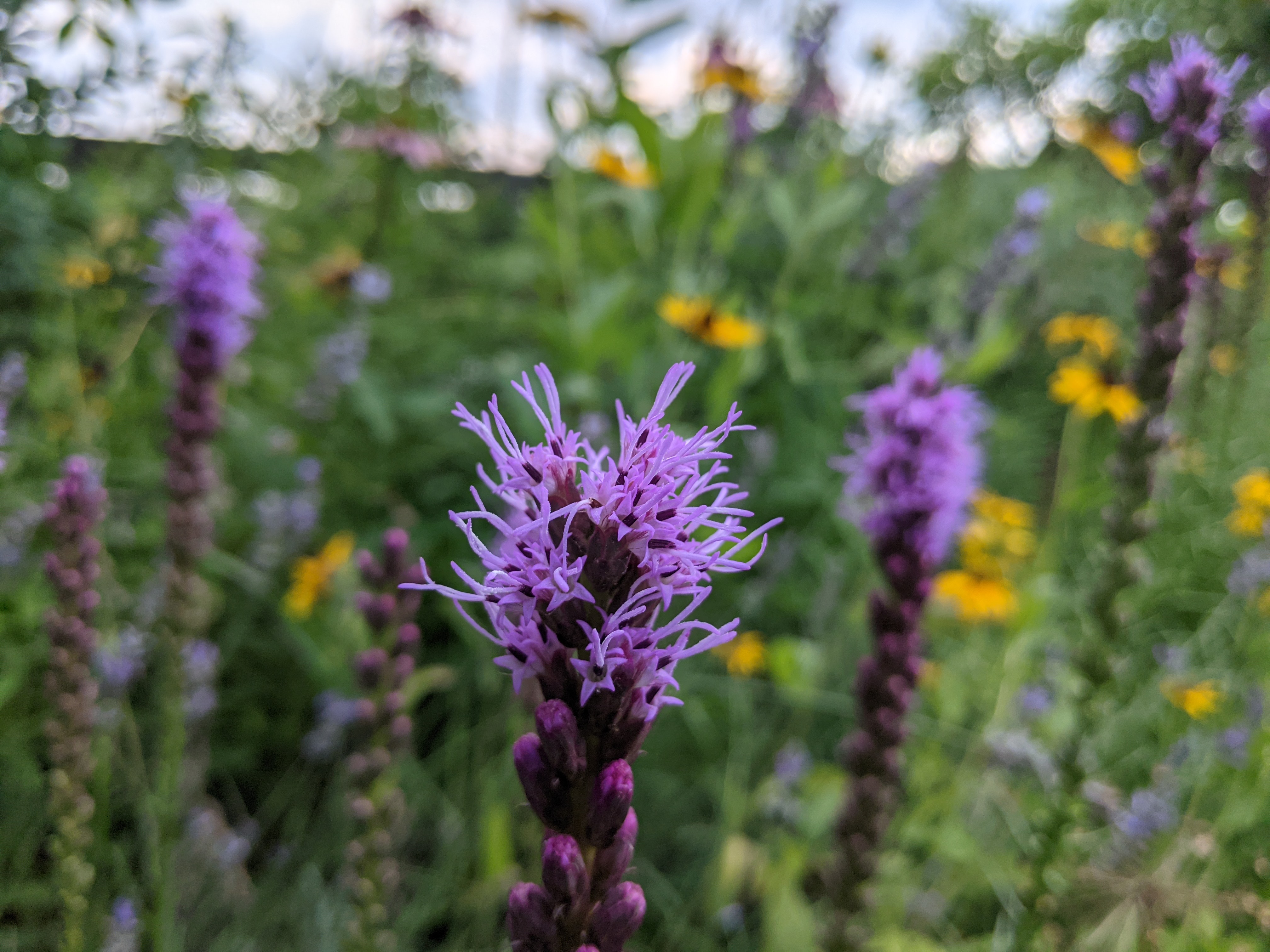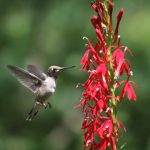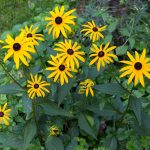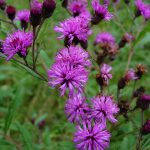
**2023 Update: Rain gardens beautify your yard, decrease water pollution, and support native wildlife—are you interested in receiving one at an 80% discount? GVC is actively seeking candidates to receive rain gardens through our Clear Creeks Project, which provides an 80/20 grant/client cost-share discount to property owners living within our Project area whose properties also meet garden eligibility requirements. Fill out our pre-assessment form online to help us determine whether your property is in our Clear Creeks Project area and, if so, to be added to our waiting list for a free professional assessment. Note that filling out the form will help us capture interest in rain gardens; submitting an interest form does not obligate you to participate in the Clear Creeks Project.**
Benefits of Native Plants
Trees, shrubs and grasses that are “native”—indigenous to a particular region before European colonization—are better adapted to that region’s growing conditions. Native plants are considered heartier than nonnative plants because they need less fertilizing, watering and tending, and they help support native wildlife, especially birds and pollinators like bees and butterflies. GVC only uses native plants in Clear Creeks Project gardens.
- Require less watering and weeding than other gardens—and no fertilizing! An established native plant garden needs little maintenance. Native plants are adapted to Maryland’s climate, so they can handle our seasonal droughts with little watering and don’t need fertilizer to grow in Maryland soils. Less fertilizer also means less nutrient pollution in the Chesapeake Bay.
- Support native wildlife and attract butterflies. Native plants provide the preferred habitat for our native wildlife, particularly the birds and beneficial insects that pollinate our flowers and trees.
- Decrease water pollution. One of our major environmental problems is stormwater runoff—the water that flows over impervious surfaces (buildings, roads, etc.) directly into a creek. This water carries pollutants like car oil, sediment, and fertilizers that destroy our creeks and threaten our health. By collecting some of this water in your native plant garden, you can help filter out some of the pollutants and prevent them from reaching our creeks and the Bay. Cleaner water is safer and healthier for you and your family!
- Beautify your yard. With their diversity of colorful trees, shrubs, flowers, and grasses, native plant gardens enhance the beauty of our waterfront and showcase our pride in our Chesapeake Bay heritage.
Visit our Native Plant FAQ for additional advice on how to add native plants to your landscape.
Visit our calendar of events for hands-on gardening opportunities that feature native plants (e.g. Rain Garden workshop, Bayscape workshop, Conservation Garden Design)
Visit our Clear Creeks Project page to learn about our 60 – 80% discounts on Bayscapes and rain gardens that feature native plants.
A Sample Native Plant Garden
There are a wide variety of native plants that you can incorporate into your landscape. Bloom time is an important factor to consider both for aesthetics and creating wildlife habitat. When you select plants that flower during different seasons, you’ll create constant visual appeal in your yard. You’ll also provide beneficial pollinators with food sources throughout the year.
See some examples below of the variety of colors, foliage, bloom times, heights, and types of plants you can use in your own native plant garden. Stay tuned for future blog posts that will go into more detail about GVC’s favorite native plants for landscaping.
Spring
 Blue Flag (Iris virginica)
Blue Flag (Iris virginica)
Herbaceous perennial; 1 – 2 feet
Light: Full Sun, Partial Sun, Shade
Bloom Period: May – June (violet blue)
 Tussock sedge (Carex stricta)
Tussock sedge (Carex stricta)
Grasslike; 1 – 3.5 feet
Light: Full Sun
Bloom period: May – August (reddish/brown)
Summer
 Cardinal flower (Lobelia cardinalis)
Cardinal flower (Lobelia cardinalis)
Herbaceous perennial; 2 – 4 feet
Light: Full Sun, Partial Sun
Bloom period: July – October (red)
 White turtlehead (Chelone glabra)
White turtlehead (Chelone glabra)
Herbaceous perennial; 1.5 – 6.5 feet
Light: Full Sun, Partial Sun
Bloom period: July – October (white)
 Orange coneflower (Rudbeckia fulgida)
Orange coneflower (Rudbeckia fulgida)
Herbaceous perennial; 1.5 – 3.5 feet
Light: Full Sun, Partial Sun
Bloom period: June – October (yellow)
Late Summer – Fall
 New England aster (Symphyotrichum novae-angliae)
New England aster (Symphyotrichum novae-angliae)
Herbaceous perennial; 3.5 – 6 feet
Light: Full Sun, Partial Sun
Bloom Period: August – October (purple)
 New York Ironweed (Vernonia noveboracencis)
New York Ironweed (Vernonia noveboracencis)
Herbaceous perennial; 3.5 – 6 feet
Light: Full Sun, Partial Sun
Bloom Period: August – October (purple)
